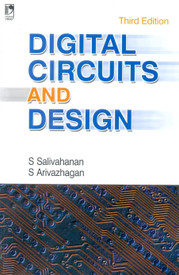Digital Circuits And Design,by Salivahanan, S Arivazhagan, S



The use of digital circuits is increasing in all disciplines of engineering. Consequently students need to have an in-depth knowledge on them. Digital Circuits and Design is a textbook dealing with the basics of digital technology including the design aspects of circuits. The third edition is divided into 16 chapters. Each chapter begins with an introduction and ends with review questions and problems. The book fulfills the requirements of the students of various BE/BTech degree courses including Electronics and Communication Engineering, Electrical and Electronics Engineering, Information Technology, Computer Science and Engineering, and Electronics and Instrumentation Engineering offered in all Indian universities. The book will also serve as textbook to students of BSc and MSc courses in Electronics and Communication, Information Technology, Computer Science, Applied Physics and Computer Software, MCA, AMIE, Grad. IETE and diploma courses, and as reference for competitive examinations.
Book Summary of DIGITAL CIRCUITS AND DESIGN 3/ED
The new edition of this popular and best-selling text on Digital Circuits And Design includes new chapters on D/A & A/D Converters, Clock Generators and Applications of Digital Circuits It includes solved and unsolved problems, review questions and exercises. Comprehensive, student-friendly, clear and thoroughly updated, this book provides a solid foundation in modern digital circuits and design principles.
Index
1. Number System and Codes
2. Boolean Algebra and Minimization Techniques
3. Logic Gates
4. Logic Families
5. Arithmetic Circuits
6. Combinational Circuits
7. Flip-Flops
8. Counters
9. Registers
10. Memory Devices
11. Synchronous Sequential Circuits
12. Asynchronous Sequential Circuits
13. D/A and A/D Converters
14. Clock Generators
15. Applications of Digital Circuits
JOIN WITH US ON FACEBOOK
JOIN WITH US ON TWITTER

















